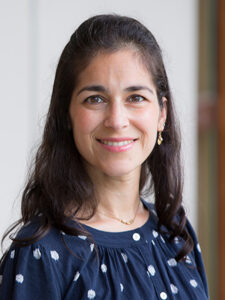A World Without Cervical Cancer: Vaccination, Screening, and Advocacy | Lindsay Kuroki, MD, MSCI; Sara S. Isani, MD

Sara S. Isani, MD
Cervical cancer often gets touted as a success story of modern medicine, showcasing the discovery of the Human Papillomavirus (HPV), the translational work around molecular integration of viral components and oncogenesis, and the innovations of pap screening and, more recently, vaccination. The science suggests that cervical cancer should essentially be eradicated.
Yet, as a gynecologic oncologist in the Bronx, I witness cervical cancer’s full impact on a daily basis. I see it in all its forms—the 30 year-old with an abnormal pap during pregnancy, who, as a single mom, missed prenatal visits and is now too advanced for a uterine-sparing option and unable to afford surrogacy; the 52 year-old whose locally-advanced disease was misdiagnosed as UTI’s, leading to a radiation-related fistula requiring a colostomy for life; the 35 year-old who avoided pelvic exams due to a sense of misgendering, only to be found to have positive nodes at the time of their radical hysterectomy.
Cervical cancer is not confined to developing countries; it remains a global disease requiring intense focus and efforts. Not unique to the Bronx either, questions persist regarding underutilized prevention strategies, optimal surgical management, new multimodal treatment paradigms, and survivorship. We need to increase cervical cancer screening and HPV vaccination rates by promoting health literacy, dispelling misconceptions, building trust, and recognizing patient trauma. Partnerships with trusted leaders in historically under-represented and LGBQTIA+ communities, along with actively hiring diverse providers, can help drive progress. To overcome barriers in access, we must offer flexible scheduling, including evening or weekend clinic hours, and provide childcare and transportation during visits. All future trials must be designed to be equitable and inclusive so that potential breakthroughs like targeted therapies, proton therapy, and oncofertility choices are applicable and available to all.

Lindsay Kuroki, MD
And what more inspiration can we take to move this cause forward than to highlight the work of the late Dr. Wendy Brewster. A Black gynecologic oncologist who immigrated to this country and rose to the highest prominence, she never forgot to advocate for increased research and progress in the care of patients with cervical cancer. She wrote, “Despite the numerous public health programs and cervical cancer screening campaigns, it is disappointing that greater than 26% of the cervix cancers had locally advanced or metastatic disease at the time of diagnosis… data could be helpful in directing efforts to identifying women least likely to be screened and to improve educational efforts about the treatment of cervical cancer.”1 Nearly nineteen years later, we find ourselves as committed and invested as ever to come together as a profession to advocate for cervical cancer prevention and cure.
While each year we recognize January as cervical cancer awareness month, the work continues daily. This year’s Annual Meeting will feature exciting sessions dedicated to cervical cancer, including: “Cervical Cancer Eradication: It Takes a Village”, a focused plenary session; “Encore & More: Cutting Edge Gyn Onc Care in Cervical Cancer”, a scientific plenary on Cervical Cancer Revolution; and more. Building on this momentum, we will be hosting a podcast in April for patients to share experiences and insights on self-advocacy and what providers can do to remain patient-centered.
References
- Brewster, Wendy. 2005. Untreated cervical cancer. Gyn Onc 96: 269.
Sara S. Isani, MD, is an Associate Professor at Montefiore Medical Center/ Albert Einstein College of Medicine in the Bronx, New York.
Lindsay M. Kuroki, MD, MSCI, is an Associate Professor at Washington University School of Medicine in St. Louis, Missouri.